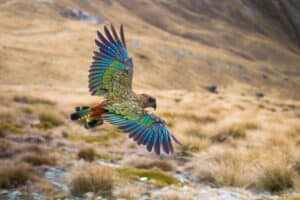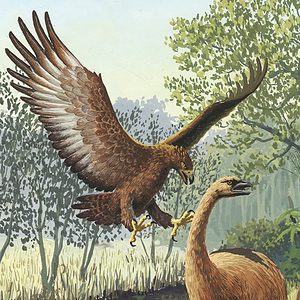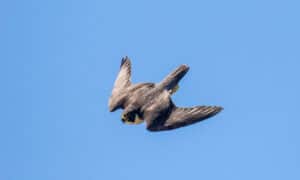Arkansas is packed with beautiful birds that spend spring and summer raising their young, but which of our non-migratory feathered friends stay put all year round? Discover 11 birds that spend their winters in mild Arkansas and where you might spot one.
1. White-Throated Sparrow
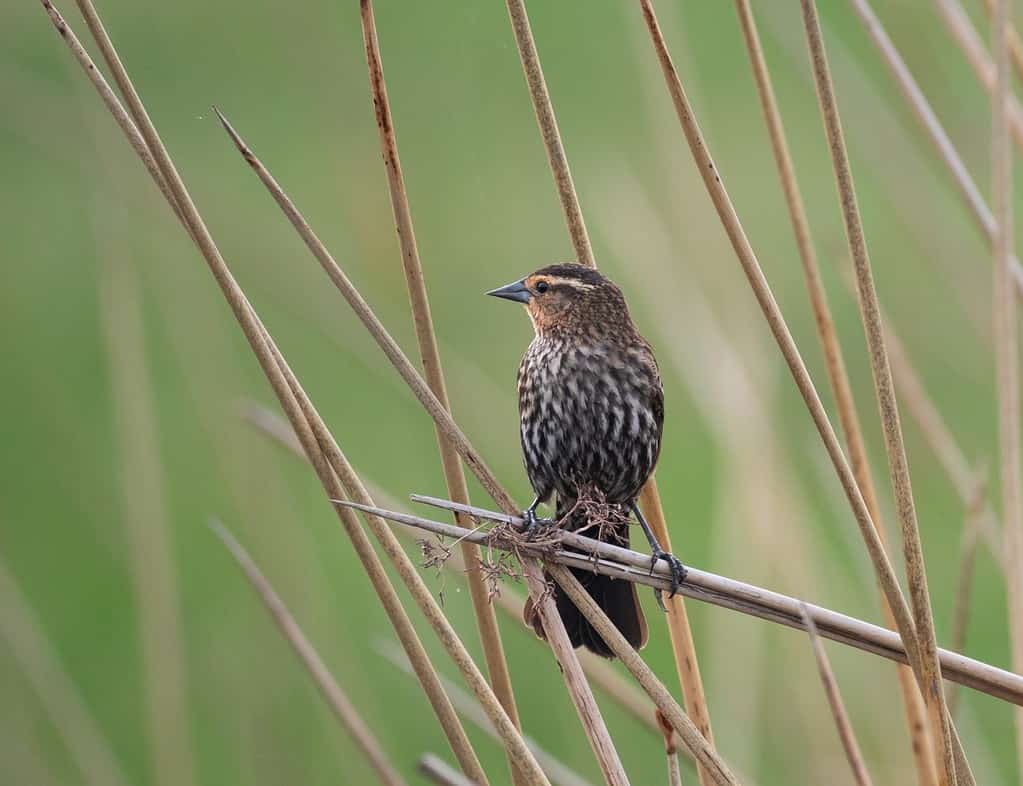
This juvenile white-throated sparrow has yet to develop its adult white throat.
©Teresa Otto/Shutterstock.com
With their distinctive white throat and striped black and white head, it’s hard to confuse the white-throated sparrow. This little seed, berry, and insect feeder reaches around seven inches long and weighs just one tiny ounce.
They live in Arkansas all year round, but extra white-throated sparrows join the natives from Canada during winter. The edge of woods and forests is the best place to spot these lively birds. They live in large groups, chirping amongst themselves and flocking to trees when danger appears.
2. American Goldfinch
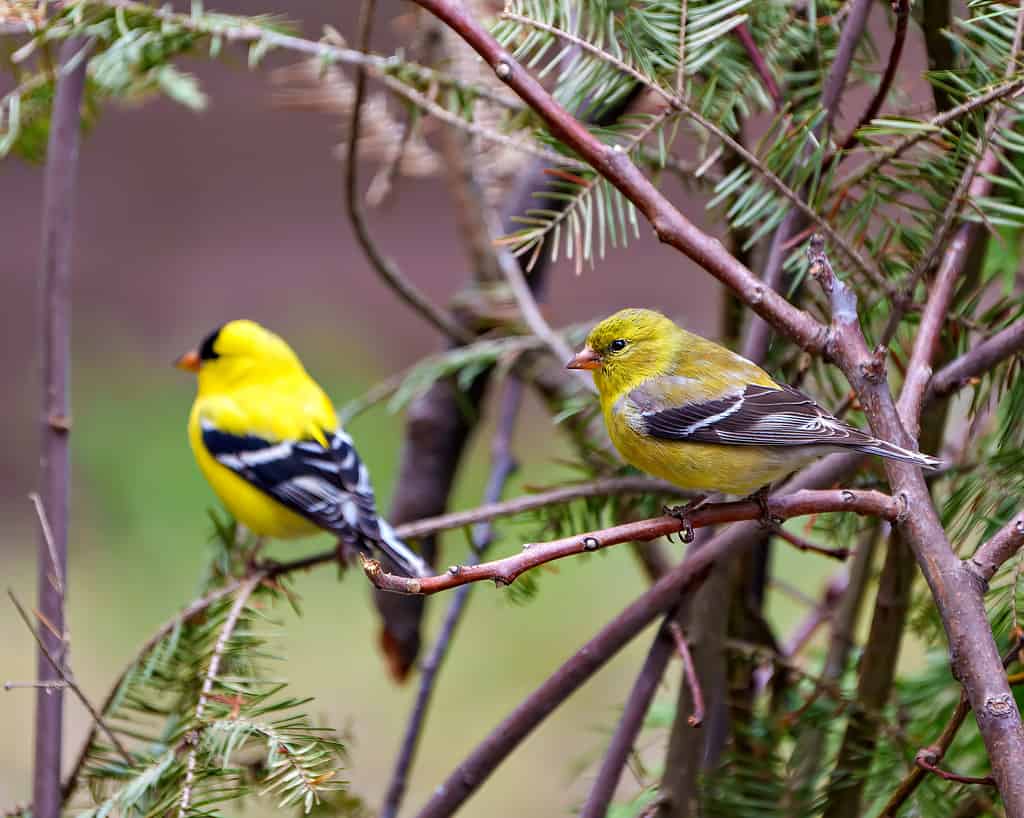
American goldfinches do not migrate from Arkansas over winter.
©Rejean Bedard/iStock via Getty Images
Bright yellow and black male American goldfinches are showier than the duller-coated females, but in winter, their colors fade. You’ll often spot pairs flitting around a yard bird feeder.
American goldfinches are among the many songbirds that spend their winters in Arkansas. They’re joined by migratory friends from Canada and the cold northern states over winter, foraging in a group for seeds—spot American goldfinches in arable fields, overgrown roadsides, and on your bird feeder.
3. Evening Grosbeak
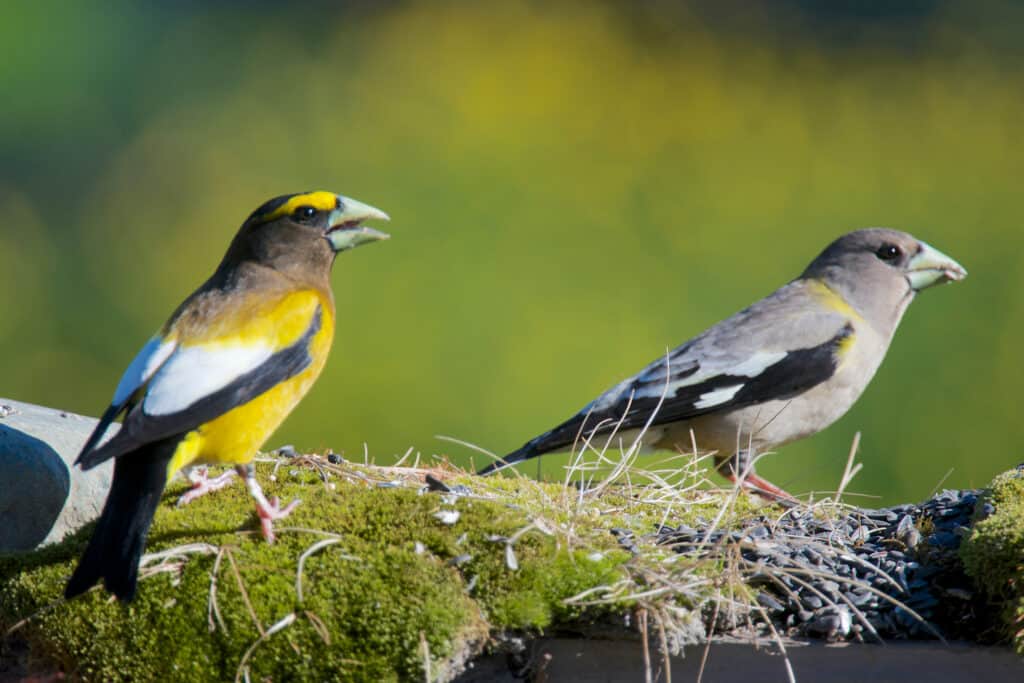
A large nut-cracking beak gives grosbeak birds their unusual name.
©Danita Delimont/Shutterstock.com
Grosbeak means large beak. It refers to this small songbird’s thick beak that cracks open tough seeds and nuts.
Many grosbeak species live in Arkansas over winter, but the evening grosbeak is arguably one of the prettiest. Males preen yellow and black feathers with a bright white wing patch, and the females, although mostly gray, have white and black wing feathers and a mysterious yellowy-green hue.
Evening grosbeaks chiefly inhabit coniferous forests, but they happily take advantage of a well-stocked seed feeder.
4. Tufted Titmouse
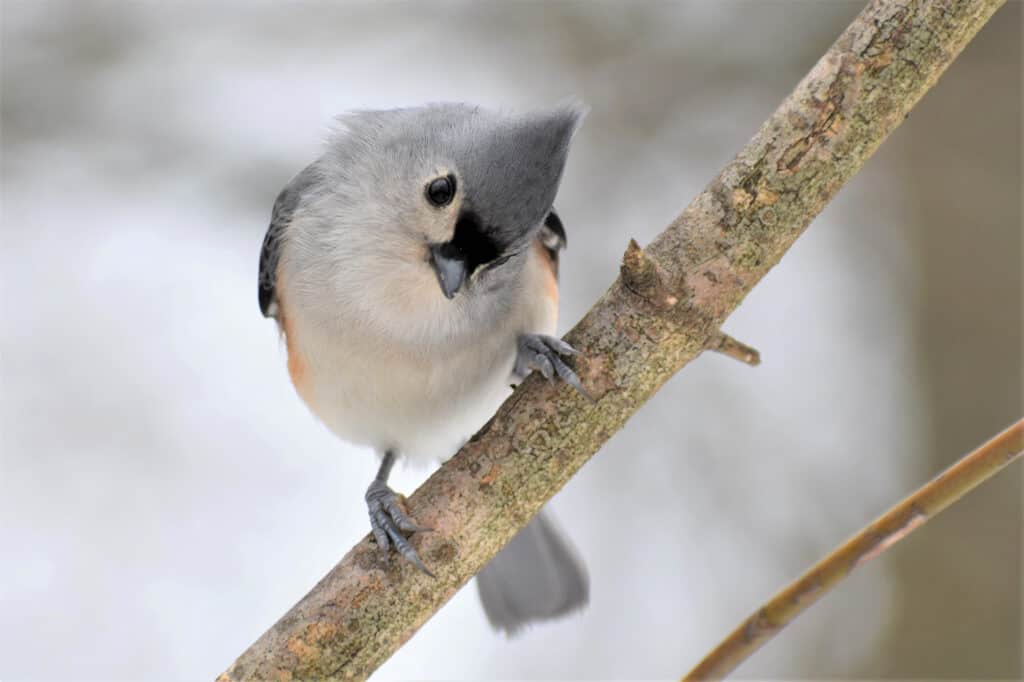
Don’t be fooled; a cute tufted titmouse is a brave and feisty bird that bullies others.
©Lester Graham/Shutterstock.com
A cutesy little tufted titmouse is gray and white with large expressive eyes. It only reaches around six inches long and weighs less than an ounce. They’re a pretty common spot in Arkansas winters. Tufted titmice don’t migrate; they stay in Arkansas all year, foraging for insects, seeds, nuts, and berries.
Despite their delicate appearance, these songbirds are ferocious at the bird feeder. They have no issue scaring off nuthatches and woodpeckers with steep dive bombs and aggressive shoving. No wonder they manage to eat wasps!
5. Golden Eagle
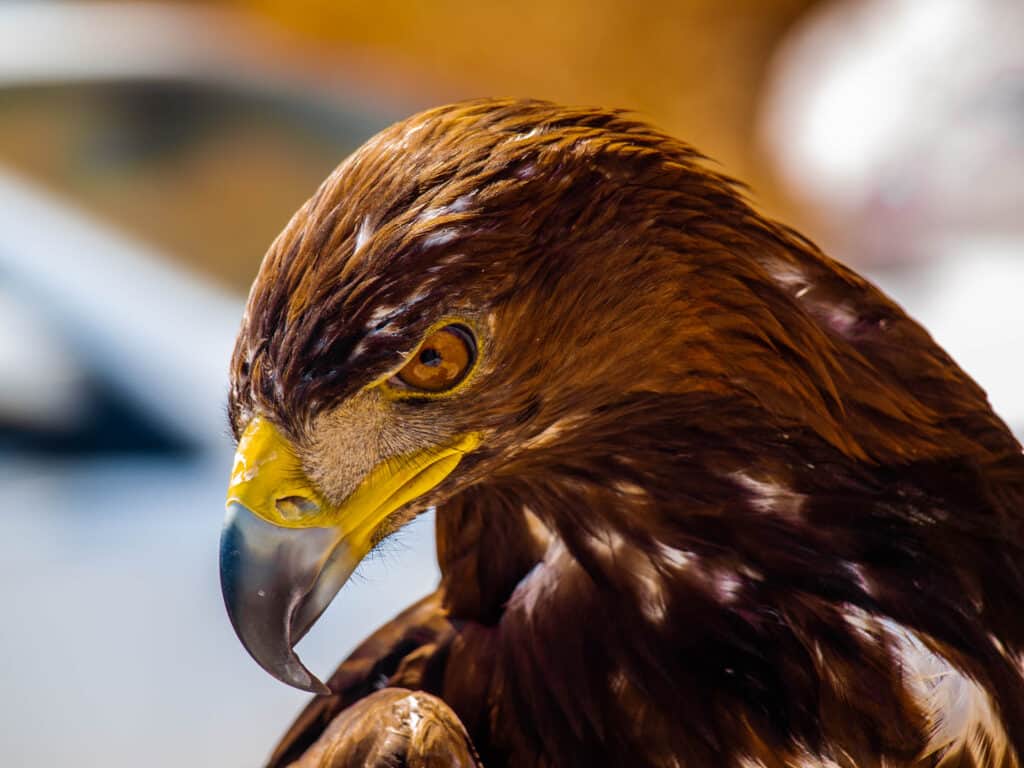
Epic golden eagles live year-round near Arkansas’ large lakes.
©elmehdi.ph/Shutterstock.com
Magnificent golden eagles are Arkansas natives and all-year-round residents. The state’s large open lakes provide enough fish to satisfy this ferocious hunter.
A golden eagle stands around two and a half feet tall with dark brown feathers and golden neck plumage. Youngsters often sport a white tail and wings. They hunt fish with a strong, hooked beak and build large nests in tall treetops. One of the best places to spot them is the Ozark and Ouachita provinces, which are close to waterways.
6. Carolina Chickadee
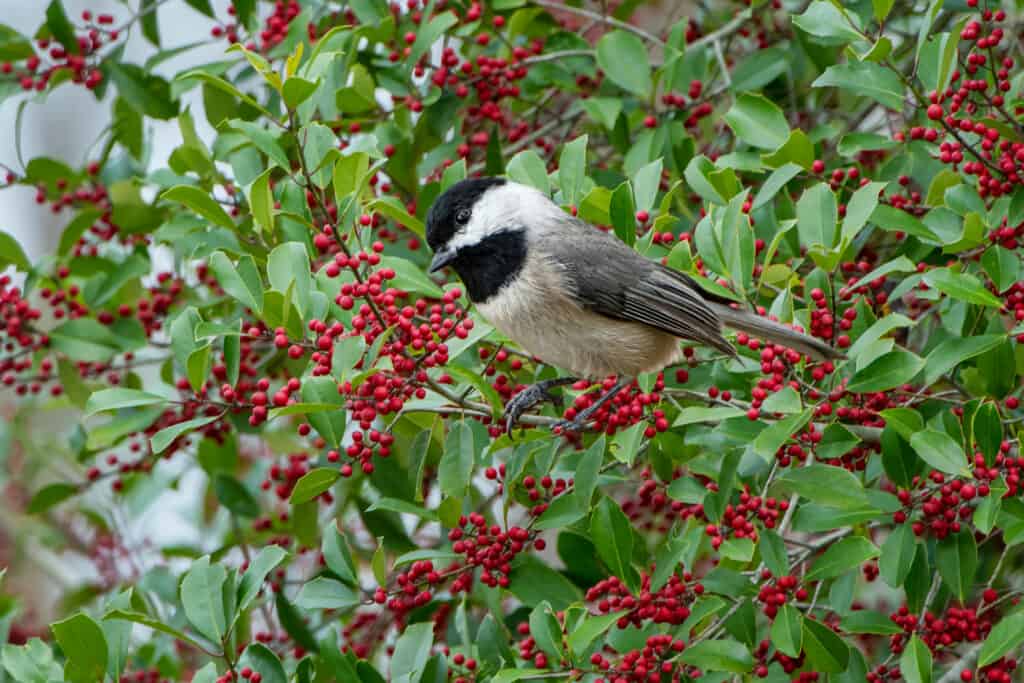
A Carolina
chickadee
only reaches five inches long.
©Bonnie Taylor Barry/Shutterstock.com
Reaching a maximum length of just under five inches, the Carolina chickadee is one of the smallest birds to spend its winters in Arkansas. This tiny seed eater has a large black head compared to its gray and white-bellied body. Its head is so large that it appears round.
Carolina Chickadees spend most of their time foraging in forested areas and backyard feeders. These little acrobats think nothing of hanging upside down to pick off the plumpest seeds. You’ll recognize one from its distinctive four-note whistle.
7. Cardinals
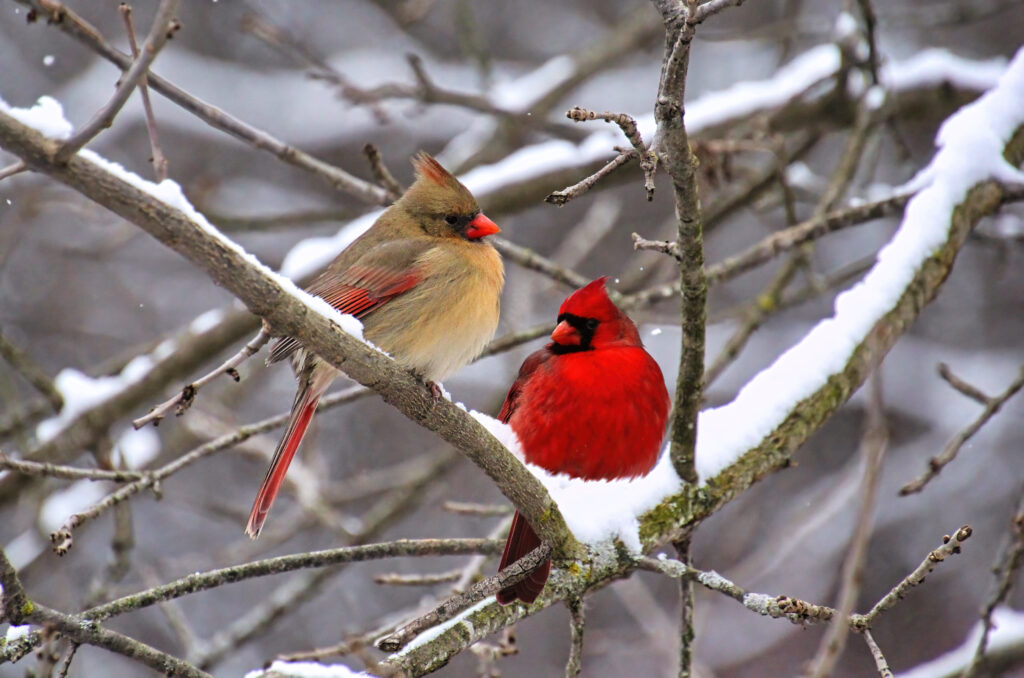
Cardinals’ bright colors make them one of Arkansas’s most obvious winter birds.
©iStock.com/Hongkun Wang
Fiery red cardinals live in Arkansas all year, frequenting well-stocked bird feeders and freshly filled bird baths. Spotting a red cardinal against frost or snow is a real treat, glowing like an ember. Female cardinals appear in shades of brown with a vibrant yellow hue. A pair of winter cardinals in the yard is like watching fireworks.
They prefer dense vegetation, seeds, and fruits in winter, but they feast on insects in summer. Cardinals are known for their feisty attitude, attacking their watery reflections during the breeding season.
8. Red-tailed Hawk
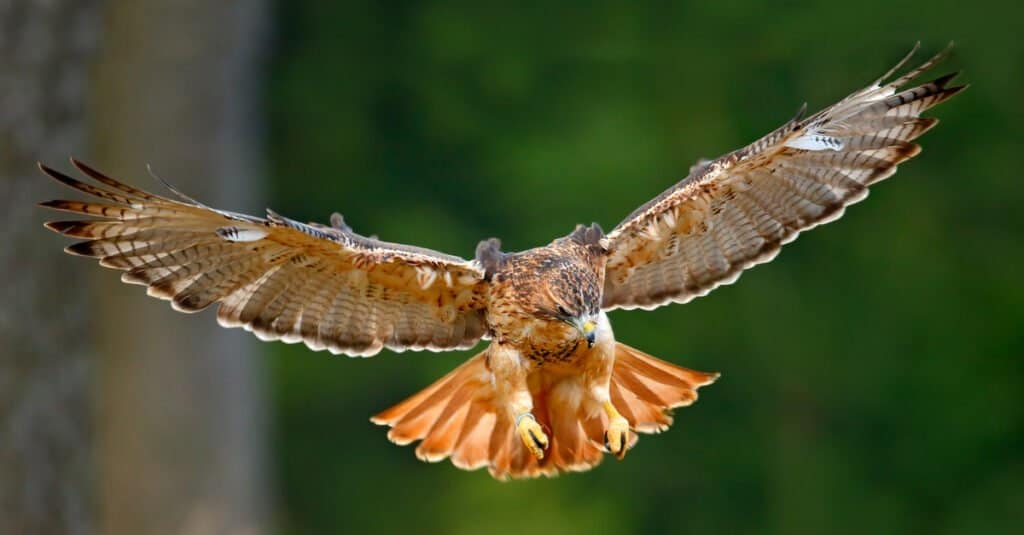
Magnificent red-tailed hawks can kill adult chickens.
©Ondrej Prosicky/Shutterstock.com
Arkansas plays host to red-tailed hawks over winter and throughout the year. Hawks don’t migrate from the Natural State.
Red and brown plumage, with a short and wide red tail, makes these raptors an obvious spot. You’ll most often see one perched on a telegraph pole or hovering on the wing as it scans the ground for an unfortunate rodent, reptile, or bird. Red-tailed hawks are called chicken hawks due to their ability to pin and kill an adult chicken.
Red-tailed hawks are common throughout the United States, but every time you spot one, it’s always awe-inspiring.
9. Hummingbirds
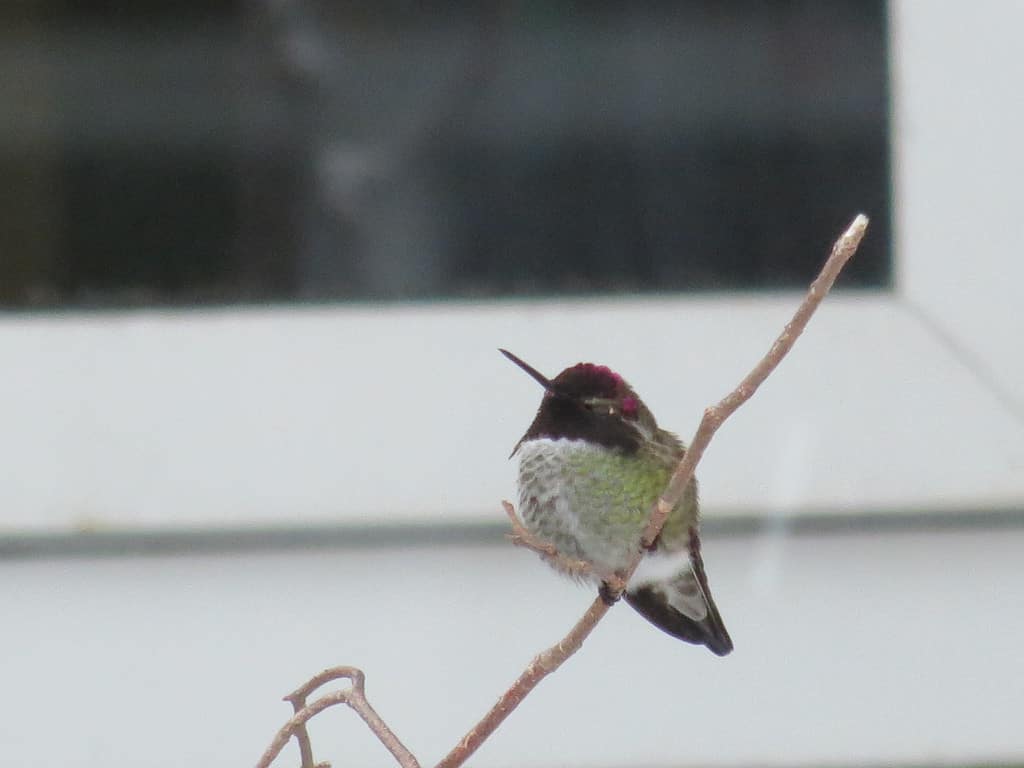
More frequently, hummingbirds choose to stay in Arkansas for winter.
©Storm / CC BY-SA 2.0 – License
Hummingbirds in winter? Yes! Hummingbirds are increasingly spending their winters in southern Arkansas due to global warming and generous gardeners.
The best way to encourage a hummingbird to spend winter in Arkansas is by providing an array of winter-blooming, nectar-rich flowers like mahonia. If that’s not an option, offer sugar water from a hummingbird feeder.
10. Dark Eyed Junco
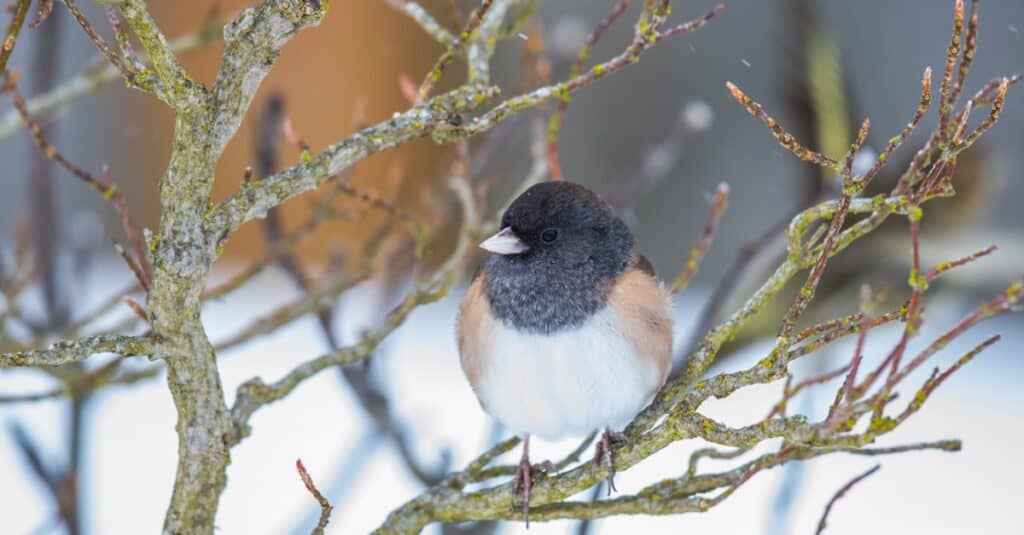
Juncos are sometimes called snowbirds and don’t migrate from Arkansas over winter.
©iStock.com/Jeff Huth
Dark-eyed juncos are small sparrows that spend the winter in Arkansas. Canadian and Alaskan juncos join them over winter, so they’re a likely spot if you can quietly watch from the window. These shy birds spend time on the ground foraging for seeds and fruits. They frequent bird feeders and shelter in safe wooded areas.
Junco color changes depending on their resident state. In the east, they appear slate gray, but in the west, dark-eyed junco foliage is brown, white, and black. Juncos boast a pretty pink beak and white tail flash in all areas.
11. American Crow
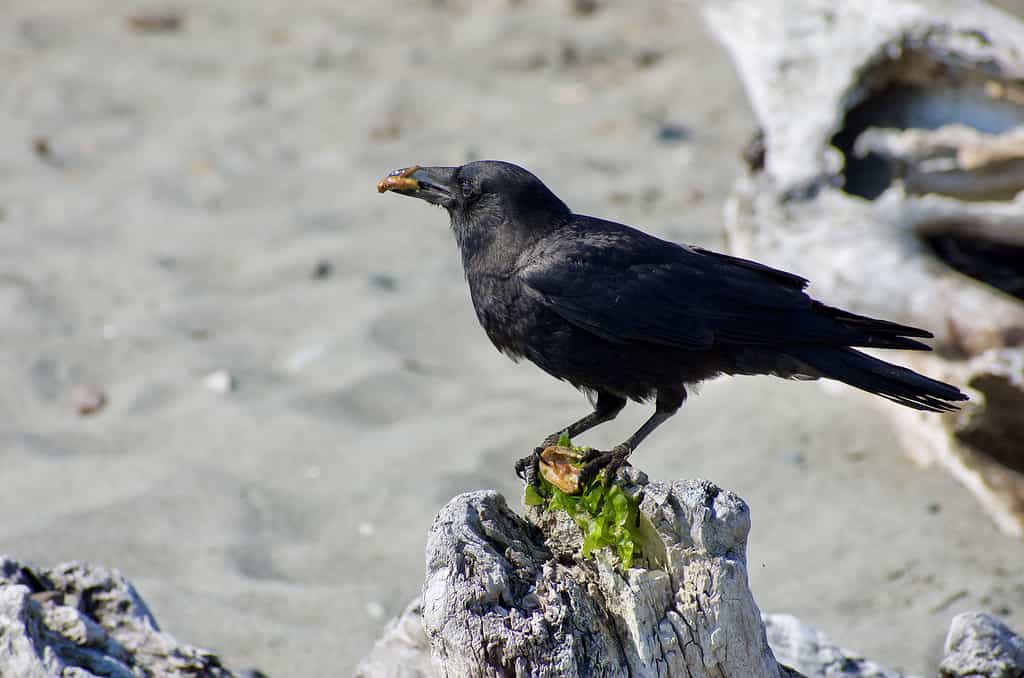
American crows eat a wide range of food, including fruit, nuts, and meat.
©iStock.com/DanielLacy
Large American crows make their considerable presence known with cackles and hoarse caws. Their glossy black plumage and large gray beaks are a regular sight during Arkansas winter days.
An American crow can reach 20 inches long with a 40-inch wingspan. They’ll eat almost anything, including turtles, mice, eggs, and nestlings. You’ll often spot them turning leaves and emptying trash cans in the park.
Clever crows are slow to trust, so it’s an honor when they appear in your yard. Constant fresh water, seeds, and fruits encourage them from the tallest treetops, where they roost in large, noisy groups over winter.
The photo featured at the top of this post is © Fiona M. Donnelly/Shutterstock.com
Thank you for reading! Have some feedback for us? Contact the AZ Animals editorial team.




